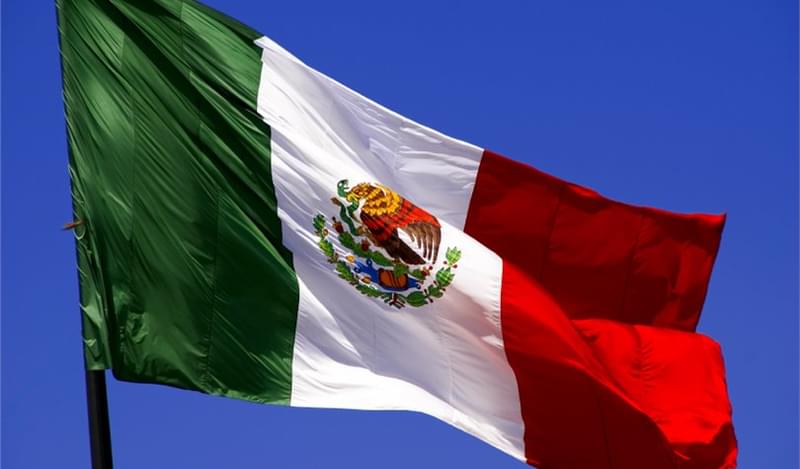At beginning of 2017, Mexican assets were the first victims of Donald Trump’s ascendancy to the presidency. Investors and analyst alike initially predicted a very unpredictable environment for the country, but as the months went by, initial fears quickly dissipated as international investors grew more confident in Trump’s ineffectiveness in moving forward with a number of his flagship policy proposals – including a wholesale renegotiation of the North American Free Trade Agreement (NAFTA).
In January, the currency a hit a low of MXN22 per US dollar and to 18.50 per US dollar in November the day after the US election. In June, the peso rallied and traded as low as MXN18.24 to the dollar.
With improving fundamentals and a more favourable currency outlook on the horizon, coupled with continued strong demand from international investors, a number of issuers came out of hiding in a bid to refinance existing maturities and front-load some of their 2018 funding needs.
The sovereign’s USD1.8bn 30-year bond was well received by global capital-holders, even though it was placed just weeks after a severe earthquake that devastated half of Mexico City.
Corporate deals also performed very well. Mexichex, a leading petrochemicals company, issued a dual-tranche USD1bn bond, which was oversubscribed more than four times over – with orders registered from the Americas, Europe, Asia and the Middle East. Mexico City Airport Trust raised USD4bn in green bonds to finance the development of the New Mexico City Airport.
Supply seems to be sector-agnostic. Grupo Televisa, the largest Spanish speaking television programming provider in the world, and Grupo Bimbo, a large baked goods producer, both placed long-dated MXN10bn bonds. More recently, a trio of financial institutions – CAME, Consubanco, and Monex – placed a combined MXN1.7bn in the local markets, while Grupo Gicsa, a Mexican real estate developer, tapped the local markets with a MXN1bn bond.
Until August this year, Mexican corporates issued close to MXN209bn (approx. USD11.7bn) in the local markets, with roughly MXN6.6tn in outstanding maturities.
John Peta, Head of EM Debt at Old Mutual Global Investor, said that with the peso gaining ground in recent months and relatively strong cash flows, issuers found opportunities to gain access to favourable financing conditions ahead of higher global interest rates and US Treasury yields.
“It may be a result of recent positive markets in EM and the expectation that NAFTA negotiations and elections in Mexico will make it harder to issue in 2018.”
“Until recently, NAFTA has flown a bit under the radar and many investors were expecting a watering down or modernization of the agreement. The US is making noises about withdrawing and NAFTA was a big topic at the IMF meetings,” the investor explained.
NAFTA, Politics Still Looms Large Over the Pipeline
As concerns over NAFTA once again rise to the fore, the peso has become the worst performer in the EM universe. It has declined 7% in the last month, falling behind the Turkish lira (6%) and the South African rand (2%), forcing Banxico to step up its intervention efforts in order to shield the currency from further volatility.
Another factor weighing on Mexico’s assets is growing political risk. Even though fresh elections are eight months away, left-wing populist Manuel Lopez Obrador has been gaining traction in the polls. A Lopez Obrador triumph could be viewed by investors as a sign that Mexico is moving away from its liberal business-friendly model and towards a more protectionist framework associated (somewhat negatively) with other Latin American countries.
“Sizable downside risks to the outlook for the Mexican economy, including increased doubts over the outcome of the NAFTA renegotiation and political uncertainty ahead of the 2018 presidential election will slow market activity going forward,” explained Martin Castellano, Deputy Chief Economist, Latin America at the Institute of International Finance.
“Dwindling confidence is set to weigh on activity. We project growth of 2.1% this year and 1.5% in 2018 amid weakening confidence stemming from tight monetary and fiscal policies, and increased uncertainty over the stability of the relations with the US.”
Most EM investors who spoke with Bonds & Loans believe Mexico’s institutions – and most importantly its Central Bank – remain solid, and predictable enough to forecast rates and FX moves under a Lopez Obrador presidency.
Castellano also believes that Mexico is ready to endure a less than favourable NAFTA negotiations outcome – if a worst-case scenario does emerge.
“External liquidity includes a sizable stock of foreign reserves and an upgraded IMF Flexible Credit Line. An expanded set of FX intervention tools should help ease pressure on interest rates. Still, substantial exchange rate flexibility is expected to continue to contribute. Banks have maintained adequate levels of solvency and liquidity. Mexico also has free trade agreements with more than 40 countries in place, which should help shift production to other markets amid the country’s highly competitive manufacturing export sector.”
The final months of 2017 are set to get more difficult for Mexico, both politically and economically, which will make it harder for borrowers to secure funding – and one of the drivers behind the recent spike in issuance. EM investors will look towards policy continuity and the strength of Mexico’s institutions as a guiding light on whether the bond supply is likely to take a siesta or enter a more protracted lull.









